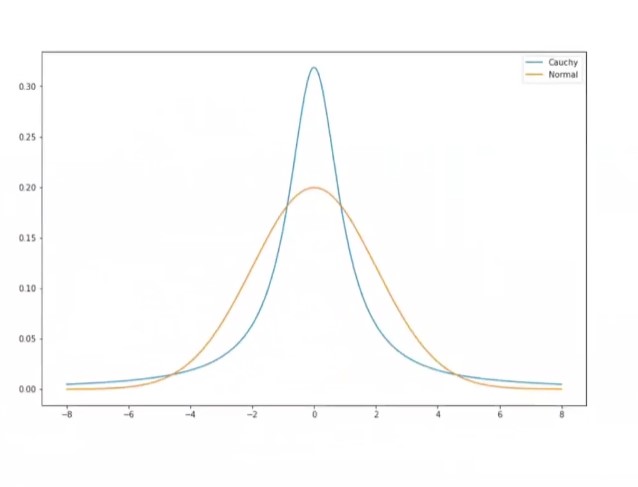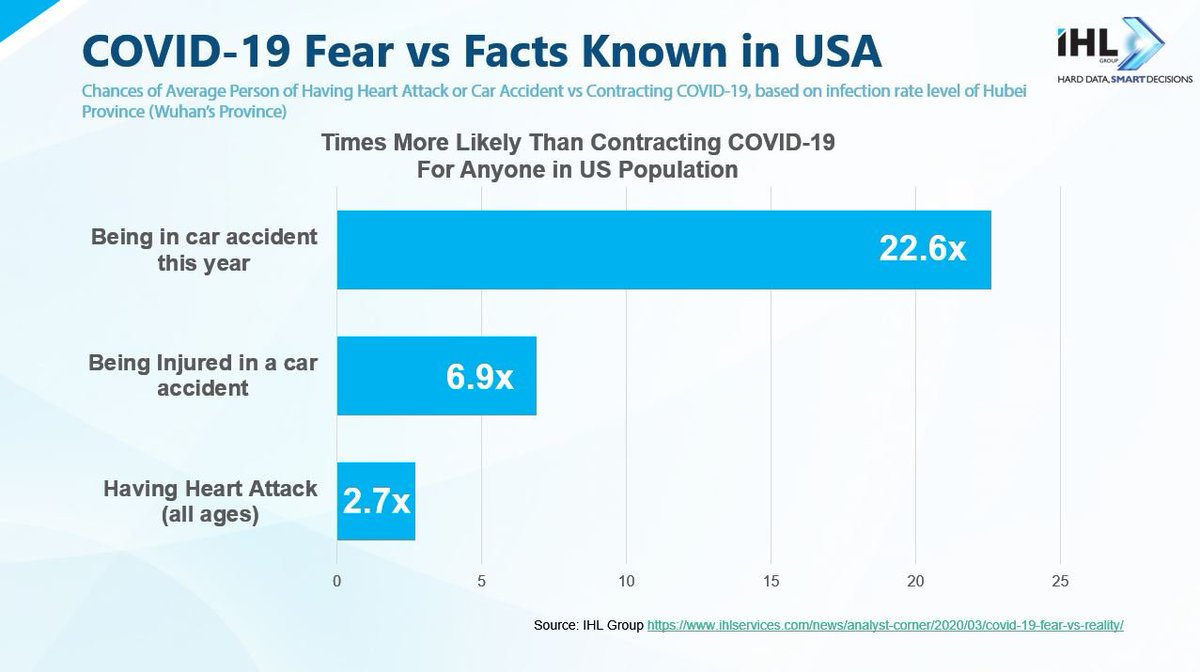
@normonics' Intro to Applied Complexity #ACS101 #SpringA2021 Highlights
Session 8: Fat Tails and Extremes
thread/
Session 8: Fat Tails and Extremes
thread/
https://twitter.com/evolvingcalm/status/1367265951129894914
An important feature of systems to pay attention:
What is independent?
What is not independent?
1/n
What is independent?
What is not independent?
1/n
There's a lot of talking past one another in the complexity sciences.
2/n
2/n
Depending on the parameters - moments are undefined -which presents problems for applying standard kinds of statistical recipes/methodologies to data without really being careful about what kind of system is this? does it make sense to calculate an average? is it meaningful?
4/n
4/n
It's almost tautological but what makes fat-tailed events extreme is that they are rare.
5/n
5/n
Probability:
What does ascribing a numerical value to an event mean?
Bayesians (abstract) discuss kinds of belief state in proportional magnitude.
Frequentists (germane) if you do a thing many times the probability converges to a certain value - often more robust/deployable.
6/n
What does ascribing a numerical value to an event mean?
Bayesians (abstract) discuss kinds of belief state in proportional magnitude.
Frequentists (germane) if you do a thing many times the probability converges to a certain value - often more robust/deployable.
6/n
The normal distribution is fully characterised by mean & variance parameter
(Location & scale)
"e is just a number"
7/n
(Location & scale)
"e is just a number"
7/n
Two people walk into a bar -
What's the most likely distribution if:
Their total height is 14ft?
Their total net worth is $200m?
Their total weight is 272kg?
One or both might have a tail?
8/n
What's the most likely distribution if:
Their total height is 14ft?
Their total net worth is $200m?
Their total weight is 272kg?
One or both might have a tail?
8/n
Thin tails/normal distribution is treated as the standard stats distribution. Why? because it's an attractor that occurs when certain assumptions are met.
Those are you're taking independent draws/events & more subtly - none of those distributions have infinite variance.
9/n
Those are you're taking independent draws/events & more subtly - none of those distributions have infinite variance.
9/n
The law of large numbers basically says that if you keep drawing from the same distribution eventually your sample will be large enough that it will look like or approximate the true distribution.
10/n
10/n
One of the tell-tale signs of a thin tail is if you look at in on a log/log plot the thing plummets.
11/n
11/n
Supra-exponential (decay) normal tail
Sub-exponential pareto tail - tail index stays the same, no characteristic scale.
Exponential tail - Kind of the boundary condition between thin & fat tails.
12/n
Sub-exponential pareto tail - tail index stays the same, no characteristic scale.
Exponential tail - Kind of the boundary condition between thin & fat tails.
12/n

In something self-similar like the Pareto distribution
The shape of the tail is always the same as you go farther and farther out into the tail.
13/n
The shape of the tail is always the same as you go farther and farther out into the tail.
13/n
Often when we are talking about fat-tailed distributions we are looking at one tailed distributions
14/n
14/n
Intuitively the Cauchy distribution looks like a normal distribution.
It's two tailed, same rough shape, left/right symmetries, centered around 0 without additional parameters.
But it's indeed fat tailed & has strange/unintuitive properties like not having an average.
15/n
It's two tailed, same rough shape, left/right symmetries, centered around 0 without additional parameters.
But it's indeed fat tailed & has strange/unintuitive properties like not having an average.
15/n

When looking for a Cauchy distribution mean
"Well that was a jump - we went from two to infinity"
(The standard deviation is also infinity)
16/n
"Well that was a jump - we went from two to infinity"
(The standard deviation is also infinity)
16/n
Compared to the normal distribution the Cauchy is similar looking during random draws... except for the huge deviations... which increase more & more the larger the sample.
It has no characteristic scale.
As the tail index goes down the tail gets fatter & fatter.
17/n
It has no characteristic scale.
As the tail index goes down the tail gets fatter & fatter.
17/n
If you had a system that was measuring something that was coming from a Fat tailed distribution and you started calculating the standard distribution (or mean or whatever) from your sample - you'd be doing nonsense.
18/n
18/n
What does it mean you're doing nonsense? The distribution is not well behaved - it doesn't convert,
There's no value that if you try to take the average that the thing converges to.
19/n
There's no value that if you try to take the average that the thing converges to.
19/n
If you sampled something in reality & started calculating the averages of your samples 'hey looks like maybe it's converging to something here' then it jumps & as you get larger & larger samples it doesn't converge, it never converges, it always keeps jumping no matter what.
20/n
20/n
It can seduce you into thinking that you're somewhere.
21/n
21/n
Of course you can always compute an average but it doesn't mean anything, it's not rigorous.
22/n
22/n
So what you should be doing is taking your data - looking at it on a log/log plot, seeing a line, looking at the slope, then asking yourself, is there a mean? There may be statistical error, but there might not be a mean, so you can't calculate anything in a meaningful way.
23/n
23/n
Masquerade problem:
Where things appear thin-tailed for a while & then suddenly along comes an extreme event that reveals that it's not.
24/n
Where things appear thin-tailed for a while & then suddenly along comes an extreme event that reveals that it's not.
24/n
You can have a fat tailed distribution that for a very long time looks thin tailed, but you only need one large deviation to prove that you're not in a thin tailed distribution.
25/n
25/n
Telltale signs:
"They never looked at this & realised this thing doesn't fucking fit, right? It should be obvious like if you didn't have too much education you would look at that & say no those aren't the same."
26/n
"They never looked at this & realised this thing doesn't fucking fit, right? It should be obvious like if you didn't have too much education you would look at that & say no those aren't the same."
26/n

"Why if this thing is a normal distribution does the peak not match? Or come anywhere close? It's because the data is not normal."
27/n
27/n
When you have something like a Cauchy distribution around the centre here (at 0 because that's how it's parameterised ) you're actually going to see more observations around 0 in the fat-tailed distribution than you're going to see in the thin tailed-distribution.
28/n
28/n

The 'masquerade problem' can be extremely acute because if you take a reasonable sample size. The only thing you might see might be in the centre & you think it's very thin-tailed - there's not much going on here at all - then *poof* some huge deviation.
29/n
29/n
The property of fat tails is a single deviation can completely change your statistics.
30/n
30/n
Due to the masquerade problem to know if we're in a thin or fat tailed regime we can't just look at the data in a naïve standard statistical way (collect the data & look at the distributions). You don't have the sample size to tell confidently if there's a large deviation.
31/n
31/n
So then what do you do?
You return to considerations of the structure of the system = are there interdependencies? are there multiplicative dynamics? is there anything in the system that's contagious? are things connected & interacting? is there a known cascade potential?
32/n
You return to considerations of the structure of the system = are there interdependencies? are there multiplicative dynamics? is there anything in the system that's contagious? are things connected & interacting? is there a known cascade potential?
32/n
Often you have to take yourself back out of the sort of statistical/probabilistic mindset and look at the structural aspect of systems to have a sense of whether you're in a fat tailed or thin tailed regime.
33/n
33/n
This is exactly how this is why it's been obvious that we are extremely ripe for pandemics
34/n
34/n
It's a multiplicative process, these are not independent events. If I'm sick right and I go spend time in a room with @HundredthIdiot, Tim's chances of getting sick just changed.
35/n
35/n
Rather we see a lot of scientism 'Oh well you have to look at the data' 'Let the data speak' but if you have a fat-tailed process where the tail is going to show itself on the 10,000th sample & your size is 4000 then you don't know what's going on by letting the data speak.
36/n
36/n
You have to look at other considerations, one of those being you can often get a good sense of the tail from the statistics looking at a log/log plot and kind of seeing, but even if you can't do that look at the structure of the system.
What is the system composed of?
37/n
What is the system composed of?
37/n
Car crashes are an interesting one -there is a cascade potential but the cascade potential itself has pretty strict bounds.
It's another scoping issue.
(Until all cars are AI controlled and networked in the cloud via satellite - thanks Elon)
39/n
It's another scoping issue.
(Until all cars are AI controlled and networked in the cloud via satellite - thanks Elon)
39/n
One of the issues of everything being connected to the internet is that, all of a sudden, things that ought to be independent become dependent.
40/n
40/n
There are subtle ways for dependencies to sneak in there.
(Slipping in the bathtub is thin-tailed unless maybe it's a bathtub manufacture issue.)
41/n
(Slipping in the bathtub is thin-tailed unless maybe it's a bathtub manufacture issue.)
41/n

You see this kind of crap all the time, so it pays to grow a sensitivity to this error in reasoning where you look at things like.
Car accidents vs Covid - it's just the wrong way to think about the problem.
42/n
Car accidents vs Covid - it's just the wrong way to think about the problem.
42/n

These are different categories of dynamics, apples to oranges doesn't quite cut it.
It's kind of easy to compare apples and oranges - they're two fruits, about the same size, whatever.
43/n

It's kind of easy to compare apples and oranges - they're two fruits, about the same size, whatever.
43/n


This is something totally different - they're different shapes. Looked at tails and then on log/log plots, they're different shapes, they're not the same thing, you can't compare directly like that, so people trying to compare stuff like that it just don't make sense.
44/n
44/n
"Tails are really about the breakdown of assumptions of independence. Events are not independent when there are connections/interactions in the system" which is what complexity is all about.
45/n
45/n
A global state of connectivity is unprecedented.
Everything - money, food, power, goods, services.
We are cascade prone.
46/n
Everything - money, food, power, goods, services.
We are cascade prone.
46/n
When a novel pandemic is unfolding & people are saying oh well, we don't do anything about the flu (meaning the seasonal flu, not the aggressive flu) that's a different kind of error - something that is relatively well known & already with structural adaptions/response to it
47/n
47/n
The flu is endemic so it's always going around mutating.
One of the major pandemics that the globe has faced is the Spanish flu so there's nothing about the flu that's like "eh don't worry about it."
48/n
One of the major pandemics that the globe has faced is the Spanish flu so there's nothing about the flu that's like "eh don't worry about it."
48/n
There's influenza type viruses and just like everything else they're mutating and evolving etc.
A mutation could happen where it changes the statistics a lot so there's a lack of rigour trying to compare Covid to to the flu because there isn't "the flu".
49/n
A mutation could happen where it changes the statistics a lot so there's a lack of rigour trying to compare Covid to to the flu because there isn't "the flu".
49/n
In general, when you take larger jumps, whether that larger jump is something that just happened, or something that was an intervention that made it happen, doesn't really matter.
Large jumps mean, more different, mean, the system is less adapted to that different thing.
50/n
Large jumps mean, more different, mean, the system is less adapted to that different thing.
50/n
The fact that we have been living with the endemic flu doesn't mean that we want to start tacking on new endemic diseases either.
51/n
51/n
Like any kind of disease situation - we should really be developing practices and protocols for the worst possible disease that might come around and it really doesn't matter if that's a flu or a coronavirus or something else.
52/n
52/n
(Prions are terrifying.)
In the early days the issue was partly this "it's just the flu bro" type of thing.
Well in the beginning we don't know it's just the flu.
It's easy now we've been dealing with this crap for a year to forget that in the beginning you're dealing with massive uncertainty.
53/n
Well in the beginning we don't know it's just the flu.
It's easy now we've been dealing with this crap for a year to forget that in the beginning you're dealing with massive uncertainty.
53/n
Now we have a lot more knowledge and the uncertainty has been displaced into other kinds of parameters.
54/n
54/n
In the real world when you connect real physical systems together the no. of dimensions/different properties that are incidentally interconnected become so high that there becomes some carrier within the system (often a set) that some kind of cascade can propagate through
55/n
55/n
When you put real systems together, they're not just whatever the idealised model has you connecting, but also all the other things.
56/n
56/n
When you connect a lot of things together in the real world , you're pretty much guaranteed to get some fat-tailed behaviours, because when things touch cause and effect can flow through them - that you probably can't avoid.
57/n
57/n
When there's lot more accidental connections building systems & connections between them - You will get many possible ways that effects can propagate through the system unless you put things in place that are explicitly like circuit breakers to cease the propagations.
58/n
58/n
It will happen unless you have structural boundaries that will prevent it from happening.
59/n
59/n
Heuristically you should just assume if your connecting stuff together whatever's connected to whatever is going to have a cascade and usually/often you don't know what is actually going to be the agent of the cascade.
60/n
60/n
Once you have interdependencies there's always risk
61/n
61/n
If you can make your nodes less likely to propagates things through them this can mitigate a cascade.
62/n
62/n
There's research now that international flights cause a lot of spreading of Covid.
It took a year to run that study.
63/n
It took a year to run that study.
63/n
Theme of the modern era:
Looking down in a moralistic way on boundaries.
That there should be no boundaries.
We are seeing a lot of the effects of that moral premise
64/n
Looking down in a moralistic way on boundaries.
That there should be no boundaries.
We are seeing a lot of the effects of that moral premise
64/n
Living systems have to be open, meaning they can't be completely closed, but they have to select what they are open to & that means having boundaries that say no to many things.
Hopefully we get to a place where we don't see that as morally compromising & just a fact.
65/thread
Hopefully we get to a place where we don't see that as morally compromising & just a fact.
65/thread
Reminiscing...
"One challenging problem comes along and the incompetence of the entire system is exposed."
• • •
Missing some Tweet in this thread? You can try to
force a refresh




